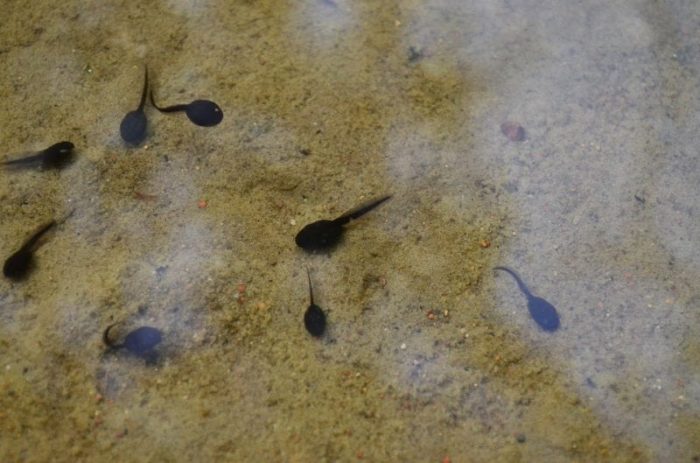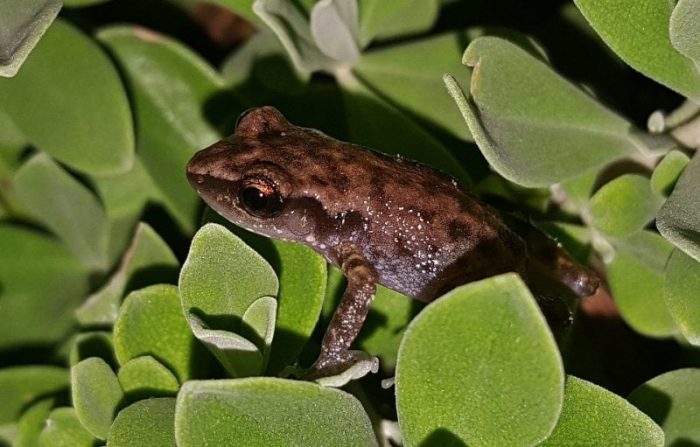
The life cycle of a frog, known as metamorphosis, is the transition of a tadpole to an adult frog. The life cycle starts with an egg, which hatches into a tadpole, the tadpole eventually gains hind and front legs, turns into a froglet as it begins to leave the water, then eventually turning into an adult frog.
As far as amphibians go, frogs are the most abundant amphibians in the world. There around 4,700 known species of frogs in the world, including 90 different species within the United States. Frogs are also the most common species of amphibians within rainforests around the world. How do all of these frogs reproduce and keep their species going?
You may have learned in school that frogs go from egg to tadpoles to adult frogs. Yet this process is more complicated than it sounds. Let’s take a deeper look into frogs and their reproductive cycles.
“We think too small, like the frog at the bottom of the well. He thinks the sky is only as big as the top of the well. If he surfaced, he would have an entirely different view.” — Mao Zedong
Before getting into the reproductive lifecycle of frogs, it would be helpful to lay the groundwork and cover some general facts about frogs.
The Difference Between Frogs and Toads
You may have wondered what the difference between a frog and a toad is, but this is actually a very difficult question to answer. In general, frogs are smoother, with less bumpy skin and their legs are constructed to help them leap and swim. Toads tend to be larger, with legs sculpted more for walking than jumping, along with possessing rougher, bumpier skin. Note that these differences are often colloquial and somewhat arbitrary, and as far as scientists are concerned both frogs and toads are members of the same class and order. Frogs and toads belong to the class Amphibia and the order Anura (meaning “without a tail”). True toads are considered to belong to the Bufonidae family while true frogs are part of the Ranidae family.
The Bodies of Frogs
Frogs come in a variety of shapes and sizes. While some frogs are tiny, with the smallest being only a centimeter long, some frogs can be quite large as the largest frog is about 12.5 (32 cm) long. While one of the defining characteristics of frogs is that they lack a tail, there are actually frogs that possess tails. Both the Coastal Tail Frog and the Mountain Tail Frog have long tails that function as reproductive organs. Furthermore, while most people think of frogs croaking, not all species vocalize as some frog species are completely silent.
Frogs usually have their eyes on top of their skulls, facing forwards. This helps them see around them, which is important as they cannot turn their heads. Their eyes are usually covered by nictitating membranes, a film that protects the eye and keeps it moist. Frogs don’t have ears like mammals do, rather they have an internal structure called the tympanum which senses vibrations.
Frogs are an integral part of the ecosystems they live in. Not only do frogs help keep insect populations under control, but they also serve as a source of food for larger mammals.
The vocal sac of frogs is made out of stretchy skin that fills with air. The frog then pushes the air out over its vocal cords, creating the croaking sound they are known for. This noise is often used to signal mates. Frogs use their ability to croak to attract mates, though it isn’t the only reason why frogs croak. In terms of mating, most frogs mate outside of the body of the female. The sperm and eggs are released at more or less the same time and then fertilized. The female frogs then lay their fertilized eggs within the water. This begins the process that will take the egg and transform it into an adult frog.
From Egg to Tadpole
Eggs are usually laid in massive clumps referred to as spawns. Adult frogs will not usually hang around to make sure the eggs develop, though in a few species they do. As the egg develops the yolk of the egg will continuously divide into more and more cells. It typically takes between one to three weeks for an egg to go from fertilization to completion, and when the egg hatches a tadpole is released from the egg (though some species of frogs emerge fully developed).
“Don’t be a fish; be a frog. Swim in the water and jump when you hit ground.” — Kim Young-ha

Tadpoles are the larval form of frogs. They have tails to help them move through the water, though adult frogs do not. Photo: Huskyherz via Pixabay
The larva of a frog is referred to as a tadpole, and they look similar to small fish. Tadpoles have small gills and a tail, along with a mouth. Tadpoles don’t tend to move around much at first, staying stationary for the first couple weeks after hatching. They often filter-feed on algae and other plant debris, so at this stage they are herbivores. At a certain point, the tadpoles will finish absorbing the remaining yolk from the egg and become strong enough to move around on their own.
Over time the tadpoles will develop their hind legs. As this happens their body elongates to compensate for their legs and their diet becomes more varied. They are now capable of eating larger plant matter and even insects. This often happens within 6 to 9 weeks of hatching. The interior organs of the tadpole change as well, lungs begin to develop in preparation for them to breathe air while on land.
From Tadpole to Frog

As tadpoles transform into frogs they lose their tail but gain front and hind legs. Photo: Brett_Hondow via Pixabay
As the tadpole transitions into a young frog, its front limbs grow out. The tadpole also loses its tail, as it will not need one once its legs are fully developed. Skin also grows over the gills. These young frogs are sometimes called froglets, and they look more or less like adult frogs except their legs are smaller and they still have stubby tails.
“I’m not a diva. I’m a tadpole trying to be a frog.” — Toni Braxton
Different environments will impact how rapidly tadpoles develop into frogs. Tadpoles who inhabit shallow ponds made out of rainwater will usually mature into frogs in a few weeks, while frogs that live in more substantial bodies of water will take longer to mature. Tadpoles who are born in long-standing lakes and rivers can take months to go from tadpole to frog.
By the time the metamorphosis is complete and the frog has become an adult, the tail has disappeared entirely. The tail and gills are completely absorbed into the body of the frog, and it can now climb out of the water and onto dry land. It will eat food to sustain itself as it looks for mates to continue the life cycle of the species.









